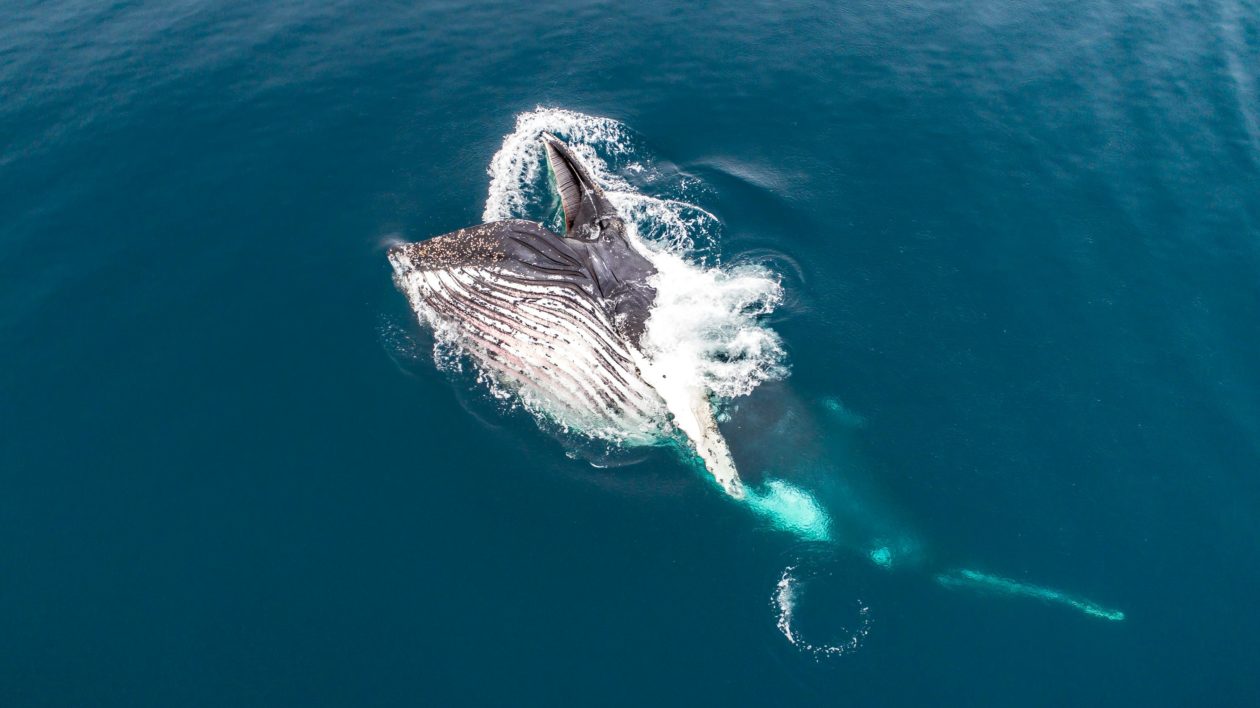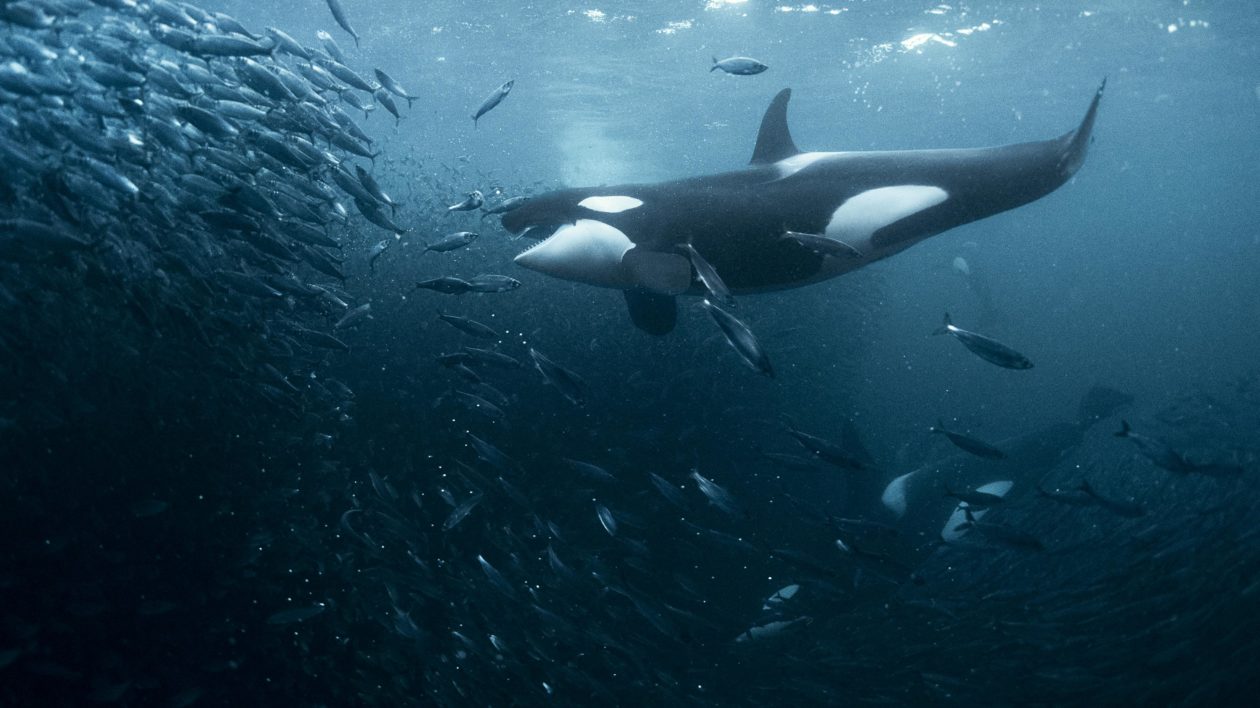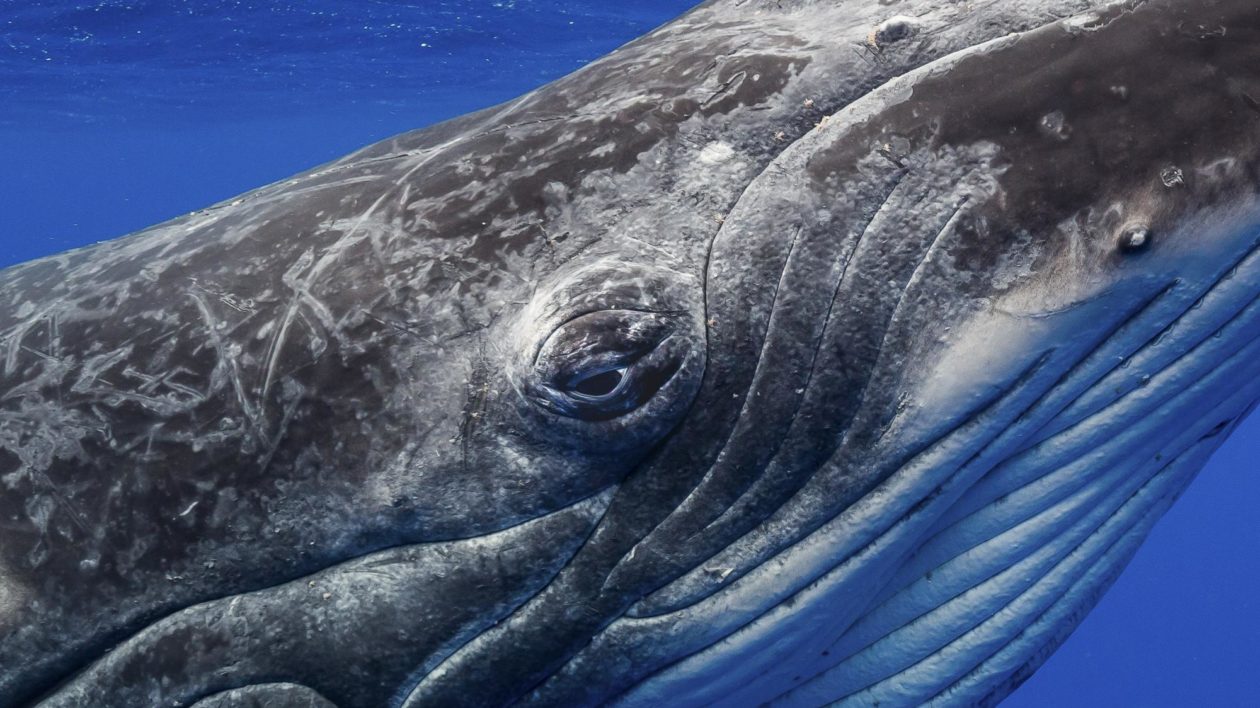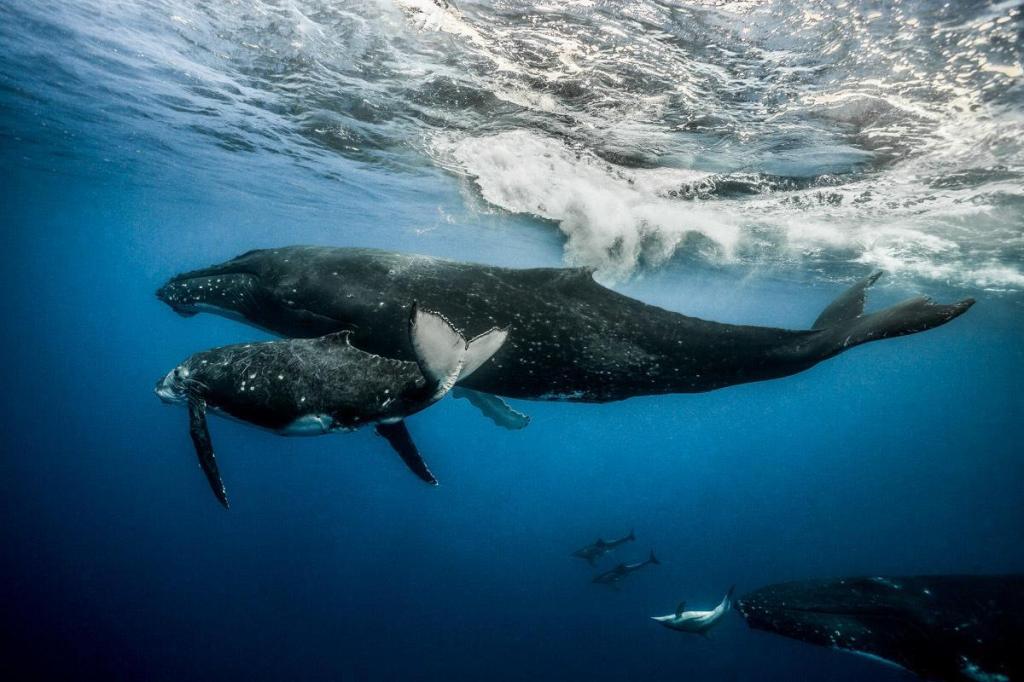Think twice before you invite me to your local trivia night.
It’s not that I don’t like trivia (I love it!) but I’m rather hopeless when it comes to many conventional trivia topics. International politics? Sometimes. Sports? Hard no. Pop culture? You’re dreaming. But then again, if you need to know how fast a cheetah can run, or what cumulonimbus clouds look like, then I’m your girl.
While in-person competitions might be a thing of the past — at least for now — that doesn’t mean you have to forgo trivia altogether. Cool Green Science is bringing you a whole new series dedicated to nature, science, and conservation trivia.
So grab your family, or set up a Zoom call with your friends, and get ready to nerd out on nature. First up, here are 9 amazing trivia facts about whales.

All whales can be divided into two groups. What are they?
Toothed whales and baleen whales. As you might have guessed, toothed whales have teeth! Orca, sperm whales, and pilot whales are some notable examples. (Dolphins and porpoises are in the same taxonomic category, odontocetes.) Most odontocetes feed on fish and squid, but some, including orcas, prey on marine mammals.
Baleen whales, on the other hand, feed by gulping large mouthfuls of seawater and then filtering it out of their mouths through large, comb-like structures called baleen. Then they swallow the fish, crustaceans, or plankton left inside. Examples of baleen whales include humpback, right, and blue whales.
How long does a bowhead whale live?
Found in arctic waters, bowhead whales can live for more than 200 years. That makes them one of the longest-lived vertebrates on earth. Scientists think that specialized genes to help repair damaged DNA might help bowhead whales live so long, so they’re studying the bowhead whale genome to see if it can yield any insights into how to increase human longevity. Orcas are also notably long-lived. Wild females have a life expectancy of about 50 years, but can live to be as old as 80 or 90.

The 1818 court case Maurice vs. Judd ruled on whether whales were mammals or fish. What was the verdict?
That whales are fish, at least for taxation purposes.
Back in the 1800s, almost everyone except scientists considered whales to be fish. They swam in the sea, they had fins, ergo whales were fish. Whale oil was therefore taxed under laws governing fish oil imports. In an attempt to dodge taxes and fines, a whale oil businessman named Samuel Judd insisted whales were mammals. The matter went to court, where the jury ruled that, for economic purposes, whales were fish.
Narwhals may be the unicorns of the sea, but their “horn” is not actually a horn. What is it?
It’s a tooth. Narwhal tusks, which can grow up to 10 feet long, are actually a single, spiraling canine tooth that grows out through the animal’s upper lip. Narwhals have two of these horizontal canines, but typically only the left tooth grows into the full tusk, and only in males. (Females can sometimes grow smaller tusks, too.)
But it gets weirder… because narwhal don’t have teeth in their mouth, just smooth gums. (Check out a photo, here.) Apparently they swallow their food (large fish) whole. Scientists examining narwhal skulls have noticed a few other small, vestigial teeth in open tooth sockets on the narwhal’s snout, near the tusks. But that’s it.
Bonus Question: What does the word “narwhal” mean? Narwhal is derived from a Norse word meaning “corpse whale,” allegedly because the color of their skin resembles a drowned sailor.
What species of whale has the longest migration?
The gray whale has the longest migration of any mammal on earth. There are two populations of gray whale. The eastern population migrates from their winter calving grounds near Mexico to their summer feeding grounds near Alaska, traveling 10 to 12,000 thousand miles round-trip each year.
The western population, which has a shorter migration route, travels through the Sea of Japan to the Russian coastline. Scientists thought this population was driven extinct by whaling, until a small number of whales were re-discovered in the 1990s. Gray whales used to be found on either side of the Atlantic Ocean, too, but they were extirpated by whalers around 500 BC in Europe and the 17th and 18th centuries in North America. Now, with arctic sea ice melting more and more each year, a few Pacific gray whales are adventuring into the Atlantic Ocean.
What is ambergris, and what is it used for?
Ambergris is sperm whale vomit (or perhaps poop, we’re not sure). It’s highly prized for its use in perfume and cosmetics. Yes, really.
Ambergris is formed from secretions from the sperm whale’s bile ducts. It’s solid and waxy, often grey in color, and is usually found washed up on coastlines. (Don’t get too excited, as it’s quite rare.) When fresh, it smells like feces, but as it ages it begins to smell sweet and earthy. Scientists aren’t exactly sure whether the whales “pass” ambergris like feces, or if they vomit it up like an oversized owl pellet.
Ambergris was used as a fixative in perfumes, which helps the scent last much longer. (You’ll be happy to know that most modern perfumes use synthetic fixatives instead. Emphasis on most.) Throughout history, ambergris has also been burned as incense by the Egyptians, used as a folk remedy to ward off the Black Death, and as a flavor additive to coffee and hot chocolate.

What’s the largest species of whale, and how big are they?
The magnificent blue whale is the largest animal known to have ever existed. That’s right… it’s not just the largest animal alive today, but the largest animal ever. (Take that, dinosaurs.) The largest confirmed blue whale measured 29.9 meters, or a whopping 98 feet long, with an estimated weight of 190 tons.
Blue whales were once abundant in all the world’s oceans, but they were hunted to the brink of extinction in less than a century. The species is now listed as endangered, and scientists estimate that the population was reduced by as much as 90 percent.
So why are they so big? Scientists think that their enormous size is linked to their prey (krill) and the “coincidence of their evolution with a global increase in the upwelling of nutrient-rich water from the depths of the ocean.”
Bonus Question: How big is a blue whale’s heart? About the size of a Harley Davidson motorcycle, or a small piano. Their hearts measure 5 x 4 x 5 feet and weigh about 400 pounds.

What species of whale haunts Captain Ahab in Herman Melville’s Moby Dick?
A sperm whale. And a particularly vengeful one at that.
Melville’s 1851 novel is both a literary classic and one of the most detailed accounts of the American whaling industry. It was based on a true story about the whaleship Essex, which sank in the middle of the Pacific Ocean after being attacked by a sperm whale. The few survivors were rescued more than 3 months later, having resorted to cannibalism to survive.
Whalers prized sperm whales above all other species, due to their large size and proportionally large amounts of oil in their bodies. The most valuable oil, spermaceti, came from inside a cavity in the whale’s forehead.
Scientists believe that sperm whales use this organ to aid their buoyancy or echolocation. Whalers would cut a large hole in the top of the whale’s head and then lower someone down inside the organ to scoop out up to 500 US gallons of spermaceti from each whale.
Bonus Question: What’s the name of the most famous real-life white whale living in Australia? Migaloo, a white male humpback, is regularly spotted off the Australian coast every year during migration season. He’s one of four white whales known to exist.




I live in MN but I go on whale watching trips as often as I can. My favorite trip is 11 days by boat from San Diego to near Cabo San Lucas. I’ve learned so much over the years, but I couldn’t answer all of your trivia questions. I really should live near the ocean, but I’m pretty settled here. No need for you to answer. I really enjoy the CGS newsletters.